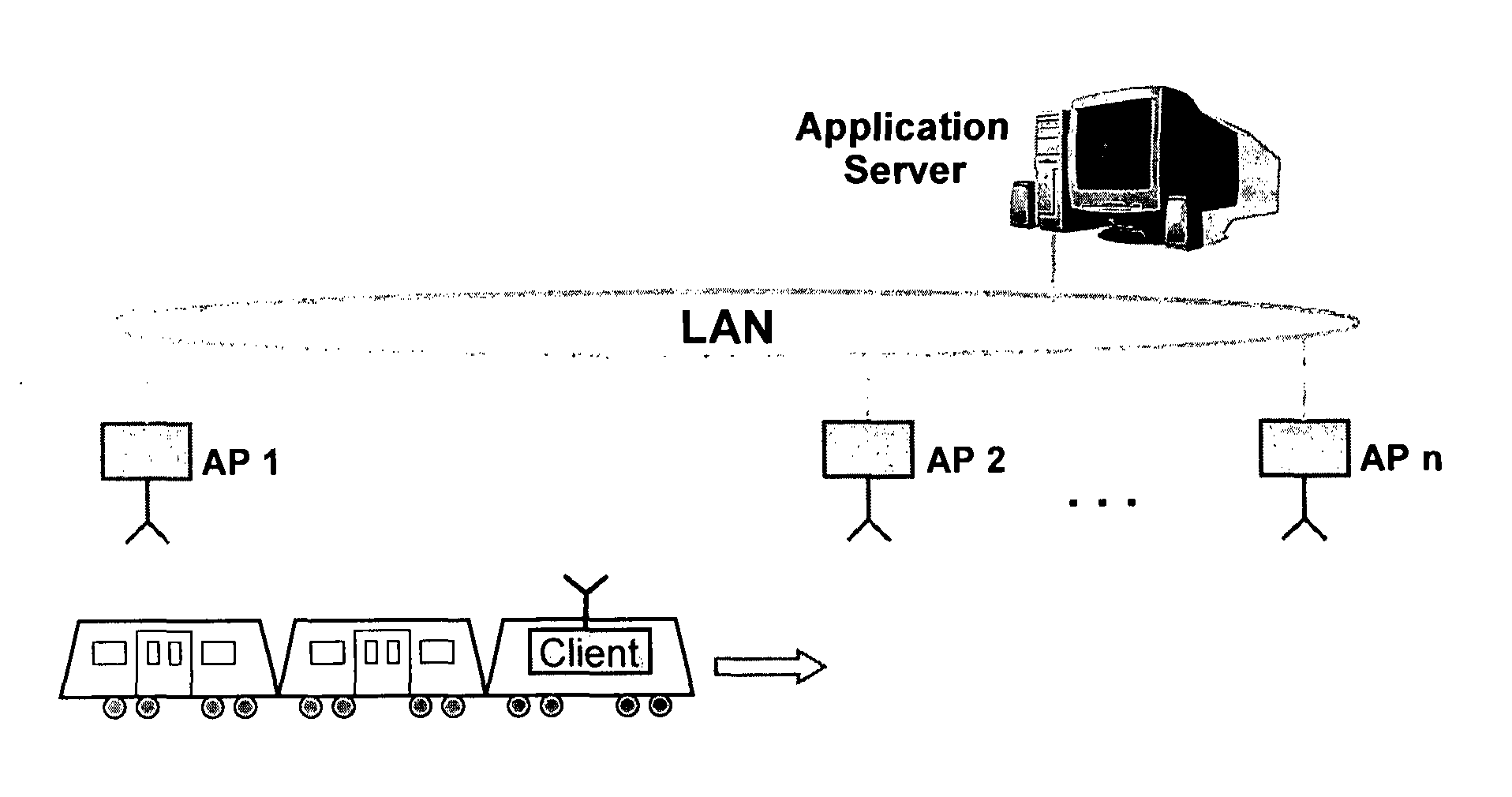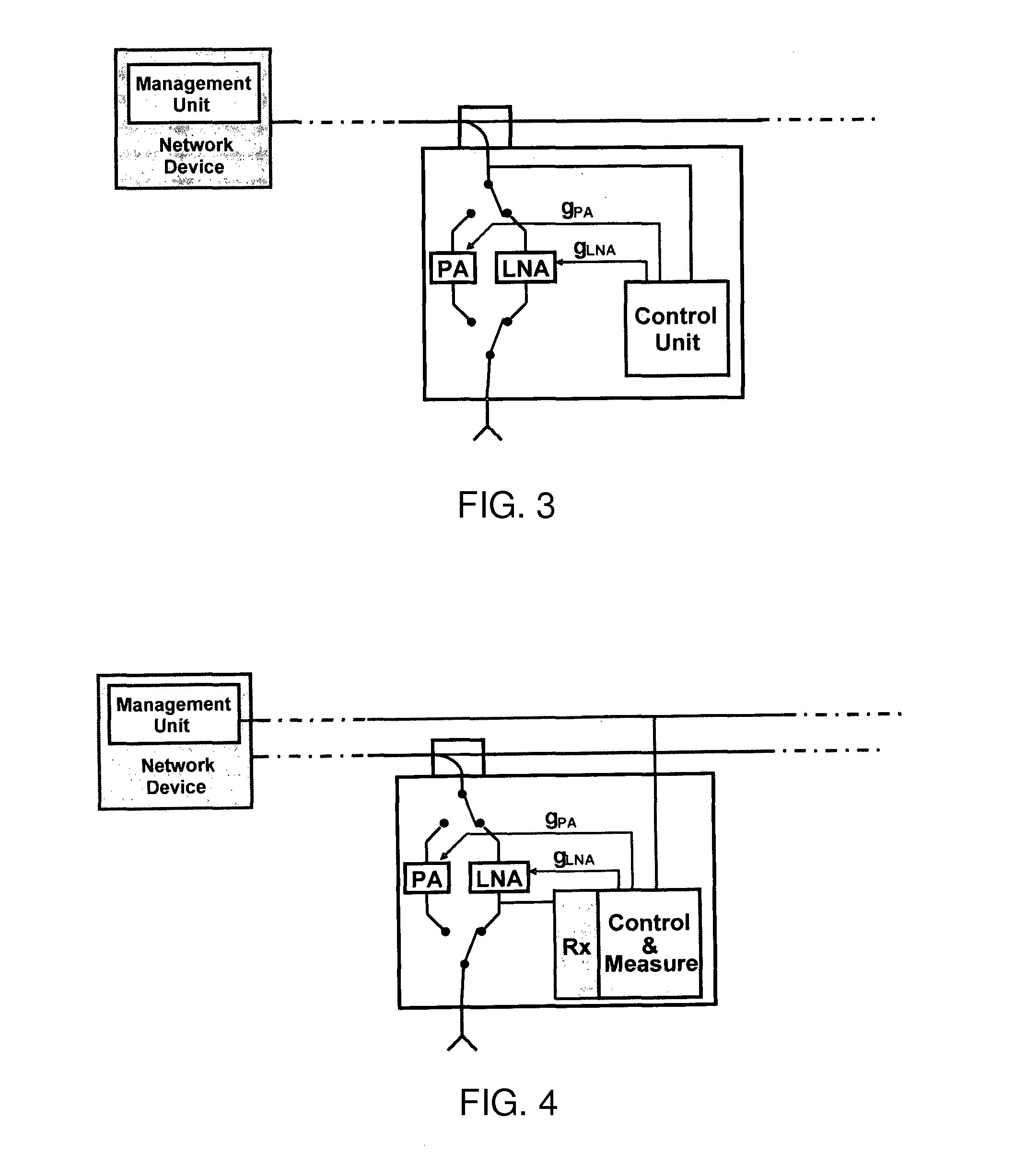Active antenna device, network device and access point of a wireless network
a wireless network and active antenna technology, applied in the field of active antenna devices, network devices and access points of wireless networks, can solve the problems of large number of aps, and difficult reliable and efficient communication, and achieve the effects of more predictable and reliable radio links, low handover frequency, and large spacing between aps
- Summary
- Abstract
- Description
- Claims
- Application Information
AI Technical Summary
Benefits of technology
Problems solved by technology
Method used
Image
Examples
Embodiment Construction
[0030]An exemplary setup of a train to trackside communication network according to the invention is given in FIG. 2. In this setup, each AP is equipped with a number of active antenna devices that are distributed along the rail, i.e. the motion path of the client. The network device and the distributed active antenna devices of an AP are coupled to each other by a wire link provided by the power distribution unit of the AP. For example, the RF port of the network device is connected to a low-loss RF transmission line (preferably coaxial cable) to which the individual active antenna devices are coupled by asymmetric power splitters or comparable coupling means. Because the RF signal loss between the network device and the active antenna devices will be different for each active antenna device due to the different cable lengths, different coupler losses and different amounts of power coupled out by the other active antenna devices, the amplification of the amplifier unit of each acti...
PUM
 Login to View More
Login to View More Abstract
Description
Claims
Application Information
 Login to View More
Login to View More - R&D
- Intellectual Property
- Life Sciences
- Materials
- Tech Scout
- Unparalleled Data Quality
- Higher Quality Content
- 60% Fewer Hallucinations
Browse by: Latest US Patents, China's latest patents, Technical Efficacy Thesaurus, Application Domain, Technology Topic, Popular Technical Reports.
© 2025 PatSnap. All rights reserved.Legal|Privacy policy|Modern Slavery Act Transparency Statement|Sitemap|About US| Contact US: help@patsnap.com



